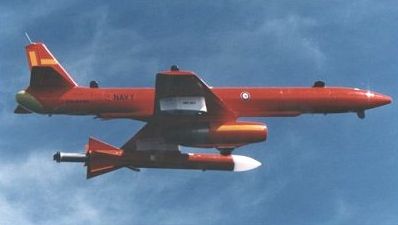


In 1989 the engine was replaced with a newer version of Microturbo's TRI 60 engine, the TRI 60-5. This variant was introduced in 1987 with another new engine, the J402-CA-702.This model was built to exhaust the surplus of the J402-CA-700 engines. This variant essentially took the fuselage of the MQM-107B and used the engine from the "A" model.This model was exported under the Model 999 name again, this time as either the B,L, or H as versions. This variant was introduced in 1982 with the more powerful Microturbo TRI 60-2 turbojet engine, and featured a larger fuselage with a higher payload capability.The export version of this model was known as the Model 999, with subdesignations A, D, E, and F for different countries.

Original model, powered by a Teledyne CAE J402-CA-700 turbojet.VariantsĪ F-16 Fighting Falcon flying in formation with a MQM-107E. Flare and/or chaff pods can be carried as well. The aircraft can carry either radar or infrared tow targets for missile training, as well as a square banner with an enhanced radar signature for gunnery training. The Streaker is generally designed to operate as a tow vehicle for missile and gun targets. It can be recovered by parachute and reused. The drone is launched from the ground with a rocket booster accelerating it until the jet engine takes over. The MQM-107 is designed as a high-subsonic target drone, featuring a slight sweep in the wings and a centerline mounted turbojet engine. Production of the MQM-107 ended in 2003, and the current inventory is being phased out in favor of its replacement, the BQM-167 Skeeter. Over the next two decade, several updated variants of the Streaker were introduced with different engines and payloads. It was announced as the winner 1975, and the Army took delivery of the original model (the MQM-107A) until 1979. Intial BQM-167A target deliveries and initial operational capability are scheduled to beguin in FY19.The MQM-107 was originally developed by Beech Aircraft for the United States Army Aviation and Missile Command's 1972 Variable Speed Training Target (VSTT) requirement. TMO awarded the Advanced Sub-Scale Aerial Platform (ASAP) contract to Kratos to provide BQM-167A targets to replace the MQM-107 in FY18. The targets are used to test various surface-to-air missile systems, such as the Stinger and Patriot, as well as air to air engagements.īoth the MQM-107 and the MQM-178 systems are transportable to TMO-supported test missions at locations around the world. These targets are controlled by the Army Ground Aerial Target Control Systems (AGATCS) and are recoverable via parachute if not shot down. The MQM-178A (Firejet) is a pneumatically launched target capable of speeds up to 480 mph at altitudes of up to 35,000 feet. Both targets are launched from zero-length launchers using Rocket Assisted Take-Off (RATO) motors that fall away after boosting the target to flight speed. The MQM 107 Streaker and BQM-34 Firebee are turbojet-powered drones capable of reaching speeds of up to 575 miles per hour (mph) at altitudes of up to 40,000 feet, or about 10,000 feet higher than the average cruising altitude of a 747 commercial airplane. Current HSATs are: MQM-107 Streaker, BQM-34 Firebee, and MQM-178A Firejet. DescriptionĪerial Targets’ mission is accomplished by High Speed Aerial Targets (HSAT). Provide aerial targets for Army, DoD and other nations’ weapons system developmental and operational testing.


 0 kommentar(er)
0 kommentar(er)
